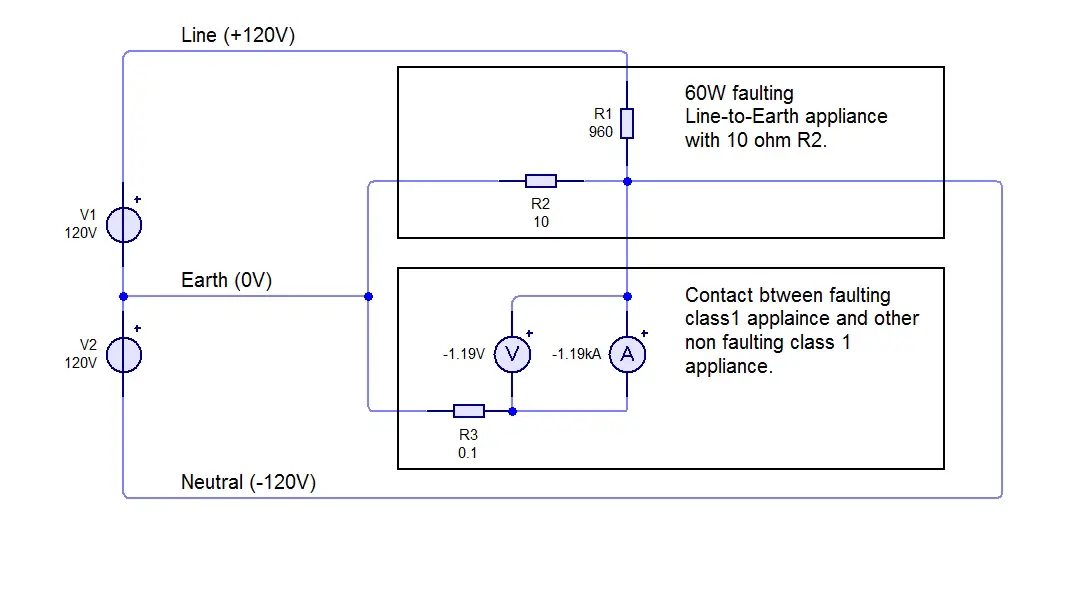whichever phase is drawing the most current pulls the voltage down on that phase and up on the other two.
Is the phase what gets pulled down due to voltage drop on that phase and the remaining two phases what get pulled up due to the two current return paths through each of the remaining two phases?
The voltage will drop on whichever phase has more current drawn, this will in essence pull the untethered star point voltage up (after the break) wrt the star point of the transformer. The other two phases connected to the untethered star point get more volts than usual. Then magic smoke escapes from the equipment!
I suppose as far as an UPS goes one would hope over voltage as well as under voltage would cause the UPS to turn to battery supply, and one would also hope there is some delay before it re-connects to the mains, so in the event of a lost neutral it would take over. However I would not bet on them taking over with over voltage. Likely only with under voltage will they take over, again with a delay it may still save the day.
It would not take much to design a device which auto turns off the supply should the voltage hit 260 volts, but I have only once in the UK been called to where the neutral has been lost, it is quite rare with the standard TN-C-S supply. Now in Algeria where the portacabins where supplied with three phase with one phase to each room in the portacabin we had loss of neutral quite a few times. And yes it did cause blue smoke to escape from low power appliances, but this problem is so rare with domestic supplies not to be worth fitting any device to auto disconnect should it happen.
But the question is about the lack of bonding between neutral and earth with small UPS powered from the 13A socket. If the output is left fully floating using a RCD is pointless. The question is does it really matter? Yes we can quote BS7671:2008 411.6 IT system and say what the regulations say, but is that really designed for small UPS?
(i) Insulation monitoring devices (IMDs)
(ii) Residual current monitoring devices (RCMs)
(iii) Insulation fault location systems
(iv) Overcurrent protective devices
Are really going OTT for such a small device.
411.6.3.1 Where an IT system is used for reasons of continuity of supply, an insulation monitoring device shall be provided to indicate the occurrence of a first fault from a live part to an exposed-conductive-part or to Earth. This device shall initiate an audible and or visual signal which shall continue as long as the fault persists. If there are both audible and visual signals it is permissible for the audible signal to be cancelled.
Seems to be aimed at UPS, the phrase "used for reasons of continuity of supply" does seem to show they are talking about an UPS. OK for a 5 kVA generator but does this really mean small 700W units?
So go on rip my comments apart, say what you think should be done and by whom, should the UPS have it built in or should the user install them separately? For all I know that 6 outlet using may be using 6 secondary windings on the step up transformer and each output could be isolated from the other, although I would not expect to find that. So what do you think is the correct approach to the problem?



